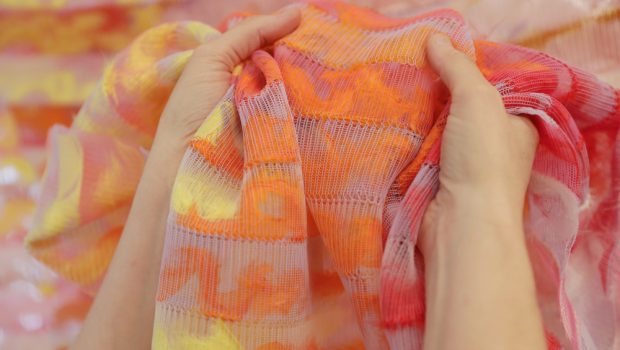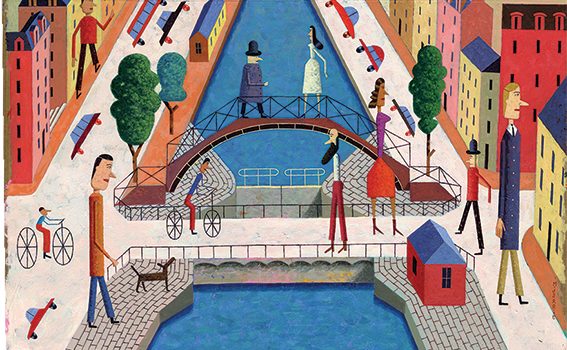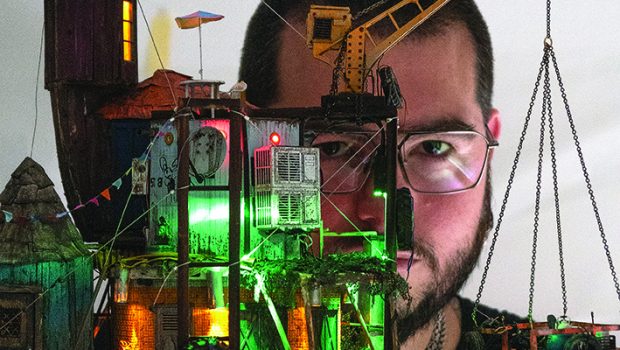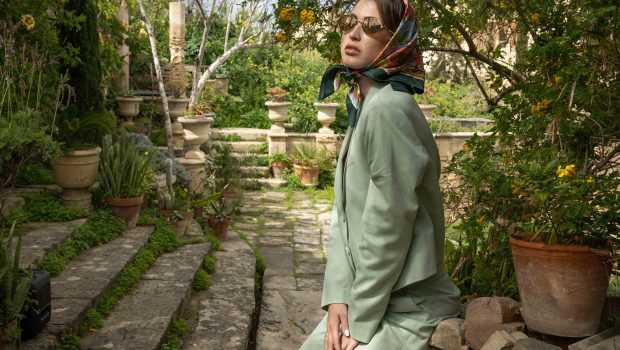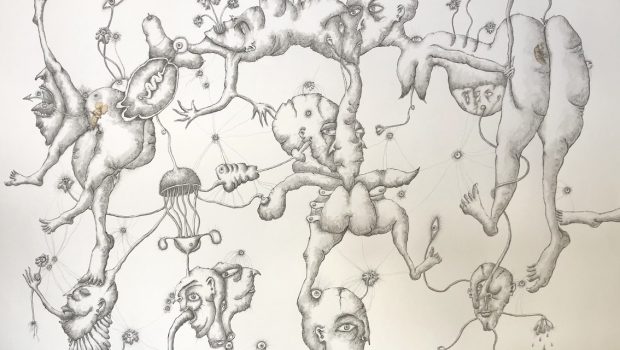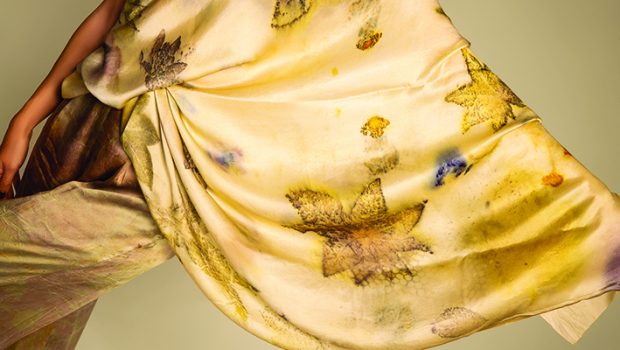Street Art:An Act of Defiance
Street art is a form of artistic expression that aims to reflect humanity’s needs and desires, often promoting human rights, equality and justice, even if it means going against the grain.
Words Sera Galea
For some, admiring art only feels right at formal exhibitions and museums.
Yet others argue that art can be found at any location, and in any shape or form. In fact, sometimes an artistic masterpiece can be found in the unlikeliest of places.
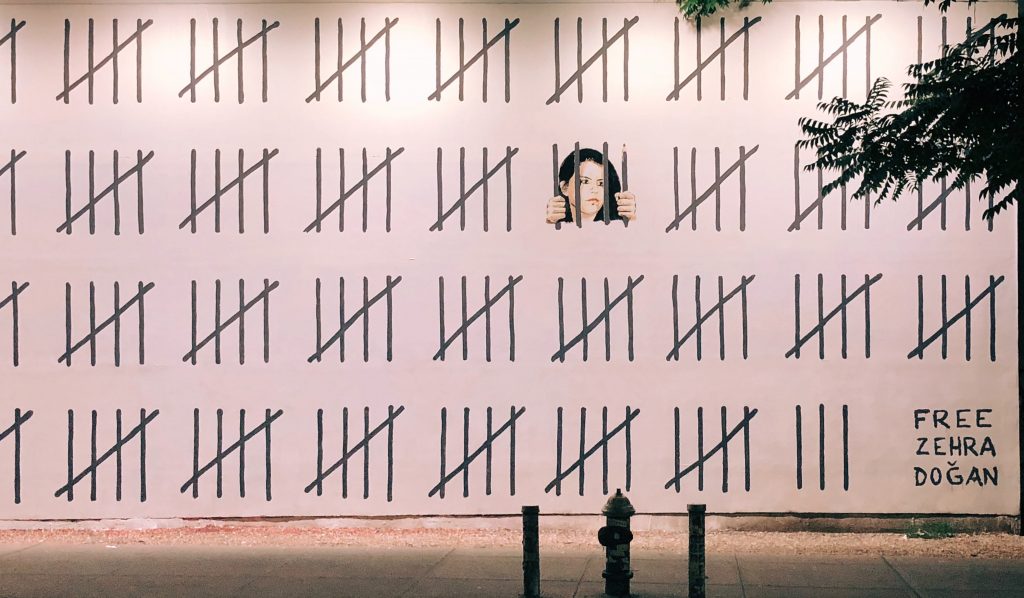
Street art is a form of artistic expression that aims to reflect humanity’s needs and desires, often promoting human rights, equality and justice, even if it means going against the grain.
In some countries such as Turkey, street art is controversial, as freedom of expression is often stifled by those in power. Multiple artists express their views in their creations. Banksy, a well-known and anonymous street-artist, does just that.
His work can be found across the globe but is mainly prominent in the United Kingdom, the US and even in Jerusalem.
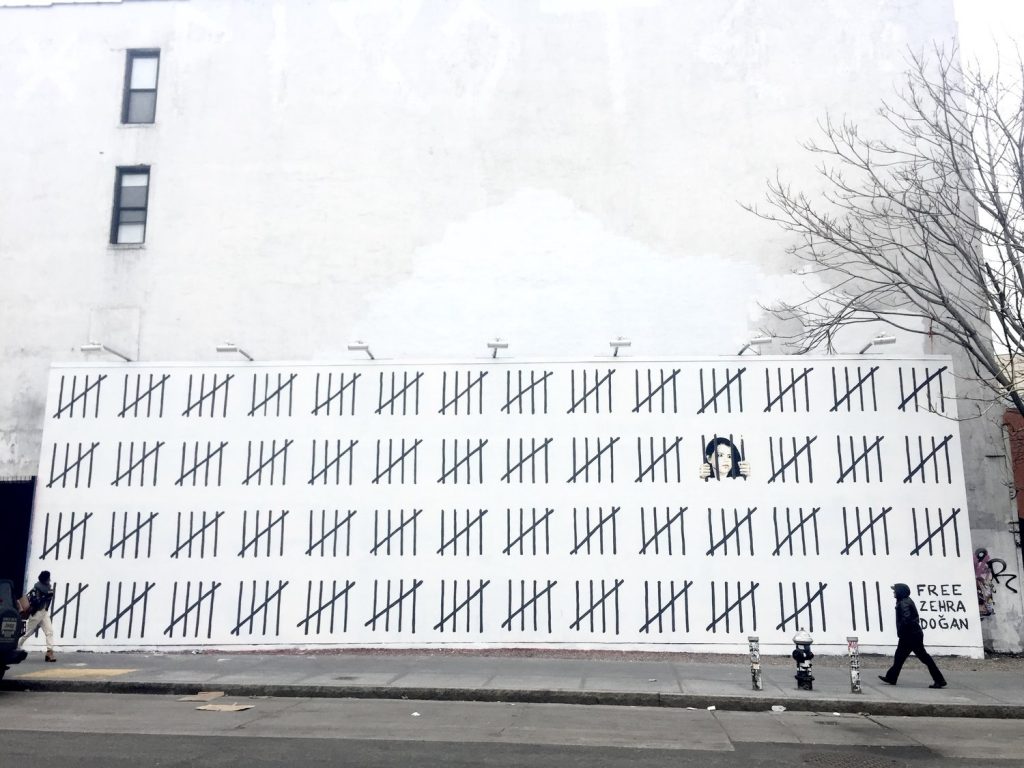
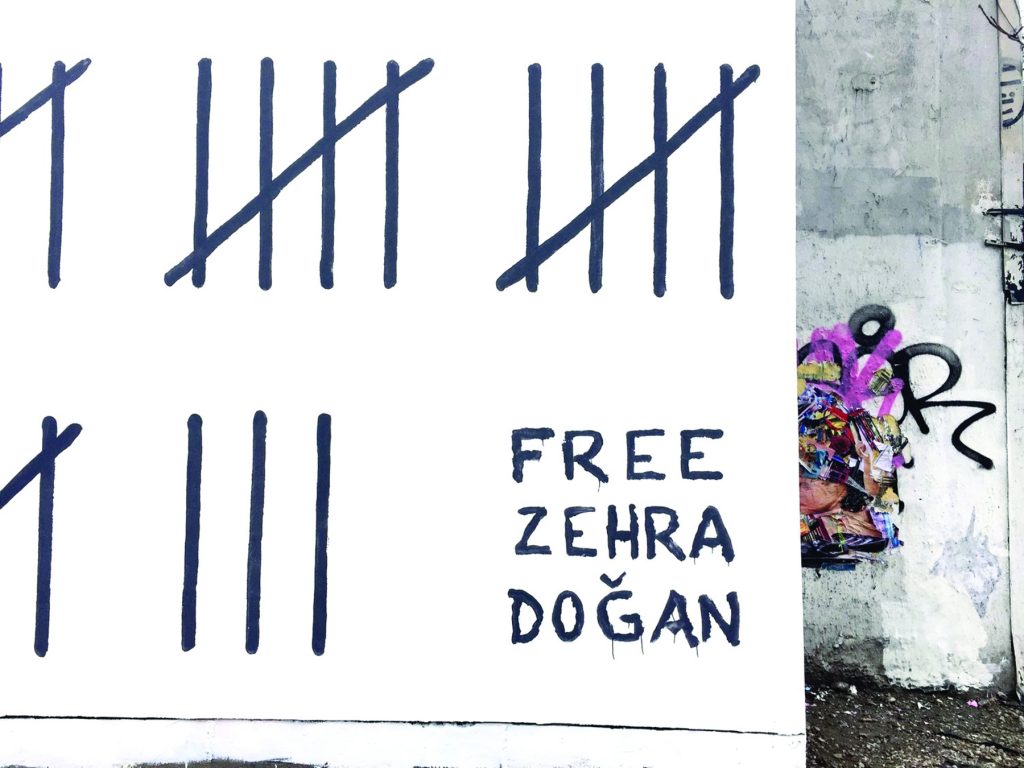
Banksy’s works usually have a powerful message, aiming to expose the truth. His work is allowing people to no longer be left in the dark about vital information that is being censored by powerful entities.
This is exactly what happened when Banksy and street artist Borf joined forces and used the Houston Bowery Wall in New York City as their canvas, to share journalist Zehra Dogan’s story. Their 70-foot creation marked Banksy’s first artistic return to the Big Apple since 2013.
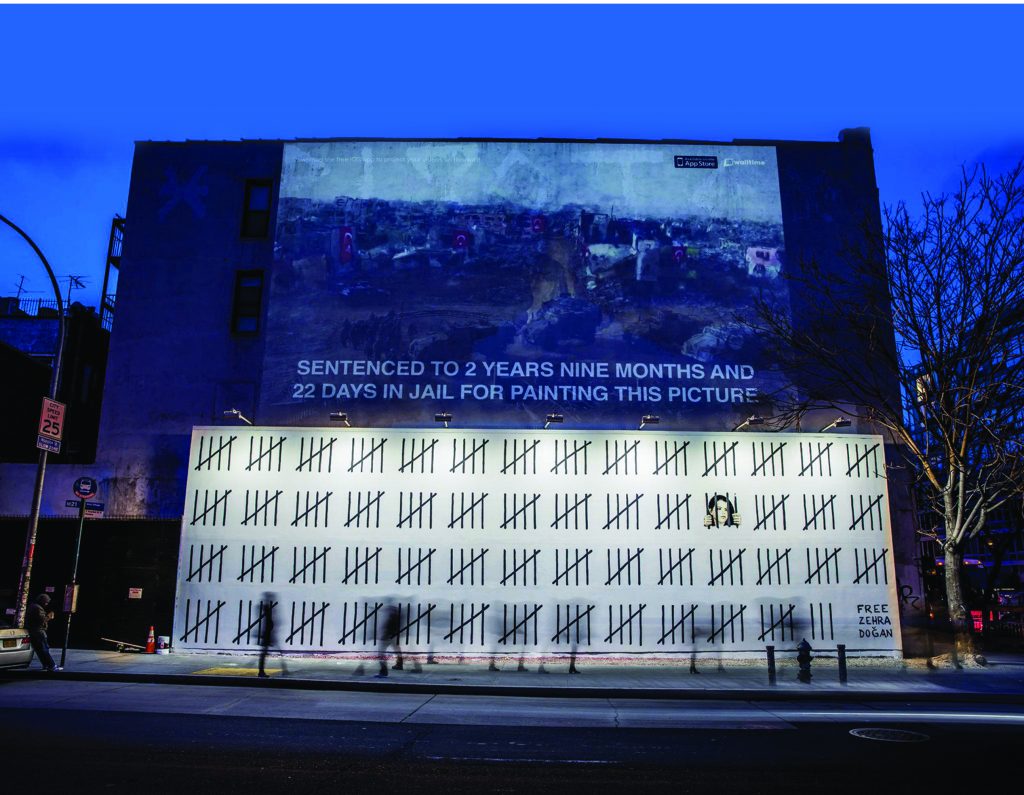
Zehra Dogan was sentenced to three years in prison for painting a realistic portrayal of the Turkish city Nusaybin after its demolition by Turkish security forces.
After she posted her watercolour on social media, the government accused the 29-year-old activist of producing terrorist propaganda in her painting.
Banksy’s mural, located in Manhattan, displays the number of days Dogan must spend in prison as of her initial sentencing date; 21st July 2016. An image of innocent Dogan behind bars and the words ‘Free Zehra Dogan’ are also part of the colossal artwork.
Any individual who analyses this piece of art will immediately notice its striking transparency. Banksy and Borf want to show the harsh reality of Nusaybin by also displaying Dogan’s painting, which is projected above the mural at night.
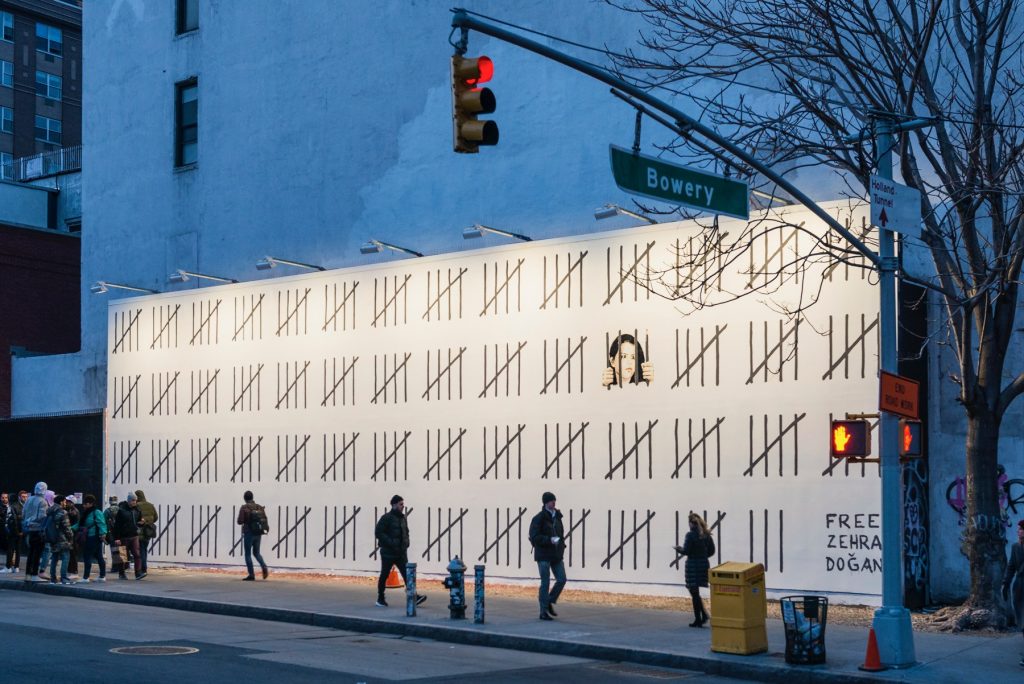
Thus, viewers of the mural learn how the young journalist is not guilty of what she was accused of.
Following the contemporary artists’ creation in New York City, the imprisoned activist managed to get in touch with Banksy by writing him a letter. In her letter (which Banksy posted a photo of on Instagram) Zehra immediately states;
‘This letter is illegal because I have a ‘communications ban’ that forbids me from sending letters or making phone calls so I’m writing and delivering this letter in clandestine ways.’
This statement makes one question the conditions prisoners like Donga live in. We should value our freedom of expression; often we are unaware of how even when we think we can freely express our opinions, there is a risk of being censored.
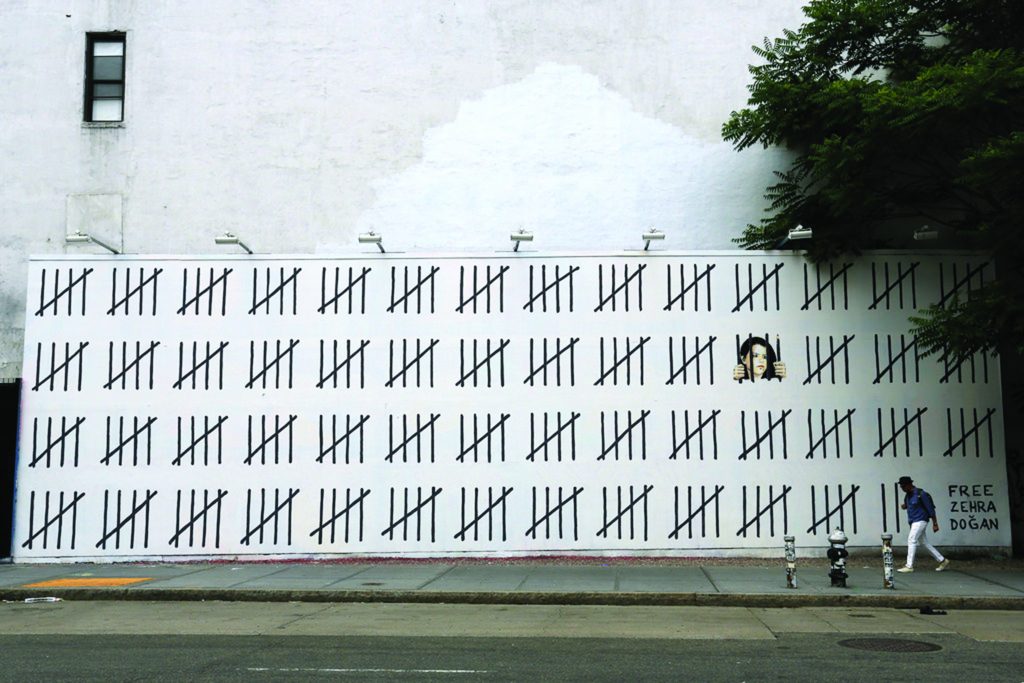
She continues her heartfelt letter by depicting her surroundings, emphasising auditory and visual details. She describes how every bomb she hears and every news article she reads is a reminder that her loved ones are in the midst of chaos and peril.
Zehra reflects on the daily struggles she endures as she boldly battles her way through the feeling of pessimism and the tragic situation she is immersed in. She also addresses how she must deal with a whirlwind of emotions on a daily basis: grief, anger, solitude and hope.
The latter is an emotion that she rarely used to experience prior to her discovery of Banksy’s mural dedicated to her and Nusaybin. She expresses her gratitude towards Banksy in her letter;
‘In a moment of pessimism, your support gave me and my friends here enormous happiness. Far away from myself and our people, it was the best reply to a crooked regime that can’t even tolerate a painting.’
Zehra Dogan’s story is only one example of how art can be used as a medium of expression for the silenced. Street art is relatable, since it’s easily accessible and it gives hope to its spectators as it gave hope to Dogan.
As she concludes her letter, Dogan writes how she aspires to create new paintings which mirror the reality and brutality in places like Afrin, a Syrian region that was taken over by Syrian Rebel forces, heavily supported by the Turkish military.
“I feel stronger and now I’m painting Afrin.”
In states where there is frequent censorship of art, conceptual art gains a minor audience, since it is either redacted or only confined to private galleries or intellectual gatherings.
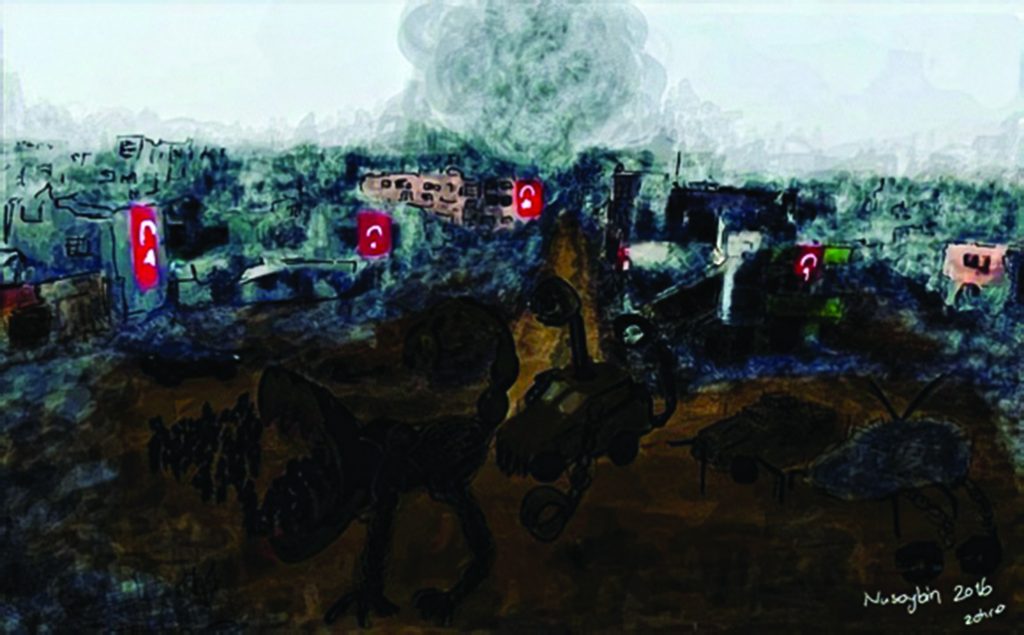
The rise of street art internationally is slowly challenging censorship, but some states try to hinder both the individual and collective power of ordinary people, by censoring art in public spaces.
Thankfully, in many parts of the world, street art is no longer considered ‘vandalism’, and is being valued for its educational and expressive benefits, even when it has a strong statement to make.
